The project is expected to cover 50,000 schools, 30 million students, and 1 million teachers. However, to train enough 200,000 teachers to teach in English in the next 5 years, the education sector will face many difficulties.
Tien Phong reporter had an interview with Mr. Le Hoang Phong, Academic Director of YOUREORG Education & Training Consulting Organization, Chevening Scholar, expressing his opinion that when the Ministry of Education and Training presented the Project "Making English the second language in schools" by 2045, many people considered this a milestone. We must find a way to make this an educational revolution, or just an unfinished promise.

“How much “capacity” does our teacher training system have?”
PV: In your opinion, will we be able to add about 12,000 preschool English teachers, nearly 10,000 primary school teachers, and at the same time train at least 200,000 teachers capable of teaching in English by 2030?
When the Ministry of Education and Training presented the Project “Making English the Second Language in Schools” by 2045, many people considered this a milestone. Not only because English is the “language of integration”, but also because it is closely linked to the aspiration to raise the national status. But there is always a gap between aspiration and reality. And it is that gap that will decide: is this an educational revolution, or just an unfulfilled promise.
Teacher manpower: ambition and limits. The project aims to add more than 22,000 new English teachers to preschool and primary schools, and train 200,000 existing teachers to be able to teach in English by 2030.
That’s nearly double the current pool of full-time English teachers. On paper, it’s a goal in line with global trends. UNESCO estimates the world will need 44 million new teachers to meet the goal of universal education by 2030.
But the core question is: how much “capacity” does our teacher training system have? How many students are willing to choose teaching as a career, and how many are willing to stay in difficult areas? A survey in Ho Chi Minh City, where the conditions are most favorable, shows that only 28% of teachers have reached B2 level or higher, while the minimum requirement is B2 for primary school and C1 for high school. That is, the problem is not only quantity, but also quality.
PV: When implementing the project, what do you think is the biggest difficulty we encountered, sir?
I think the biggest bottleneck is people, motivation and consensus. In any reform, the curriculum is just a framework; the ones who turn the framework into reality are the teachers. This project requires teachers not only to be good at English, but also to be proficient in the CLIL method, both imparting subject knowledge and developing foreign languages. This is a complex skill that cannot be “crammed” into a few short courses.
At the same time, the issue of motivation and treatment is a big barrier. Low salary, high pressure, teachers cannot be expected to innovate wholeheartedly if they do not see worthy rewards. Without a mechanism of allowances, promotion paths, and social recognition, it is difficult to mobilize professional endurance. We cannot demand excellence from a team whose policies still leave them living in shortage.
Furthermore, society also has legitimate concerns. Some parents fear that introducing English too early will obscure the Vietnamese language and weaken the cultural foundation. Jim Cummins’ theory has proven that only when the mother tongue is solid can a foreign language take root. If the trade-off is made, the risk of a generation “half-baked” in both languages is real.
So, the biggest challenge is not the number of textbooks or bilingual classes, but how to make teachers competent, motivated, and confident enough that society is on their side.
PV: In your opinion, should we consider regional factors to increase the feasibility of the project?
Regional: equity is key. If you look only from Hanoi or Ho Chi Minh City, the project seems feasible. But when you step outside the big cities, the picture is completely different.
Currently, the whole country has only 112,500 students studying subjects in English, plus 77,300 bilingual students in 40 provinces and cities. That means more than 20 provinces do not have any EMI model.
In many mountainous provinces, students are not yet fluent in Vietnamese, and now English will become a "double burden".
A representative of the Tuyen Quang Department of Education and Training said frankly: this is a “very heavy” task. If a common progress is applied, disadvantaged localities will soon be left behind. The answer is a stratified roadmap. Urban areas can go first, set an example; disadvantaged areas need more time and resources, prioritizing strengthening Vietnamese before strengthening English.
More importantly, funding and incentives must be directed to the most deprived areas. Otherwise, “English as a second language” will become an urban privilege rather than a right of equal access for all children.
The message must be clear: English is a supplement, not a replacement for Vietnamese.
PV: For the project to become reality, what foundations do you think need to be gathered?
To turn this aspiration into reality, and for English to truly become a second language in the education system, Vietnam needs to have three fundamental pillars. Each pillar does not exist independently, but is linked together into a policy ecosystem where resources, motivation and social trust are connected.
People, the teaching staff, are at the heart of reform. No language reform can be successful without qualified teachers. Experience from Singapore or Finland shows that teachers are considered “intellectual professions”, are strictly selected, well-trained, and highly rewarded.
For Vietnam, it is necessary to create a core team of teachers, about 10-15% of whom are trained in depth in CLIL/EMI, to act as the nucleus for knowledge sharing.
At the same time, there must be a retention policy: foreign language allowances, promotion opportunities, and social recognition. Otherwise, we will face a “brain drain”, with good teachers leaving public schools or leaving the profession. - Investing in people is the investment with the greatest “spread coefficient”, because each good teacher can impact hundreds of students throughout their career.
This project is a historic opportunity, but also a harsh test of policy management capacity. The question is no longer “do we want it?”, but: do we have the courage to invest in teachers, be patient with a long-term roadmap, and be determined to put equity at the center? If the answer is yes, then by 2045, Vietnam will have a generation that knows how to integrate without losing itself. If not, this vision will remain on paper forever.
In addition, there needs to be a flexible roadmap, managed by intermediate milestones, not by trust. A 20-year plan is only valuable if there are clear checkpoints. Vietnam needs to set milestones for 2026, 2028, 2030 with quantitative indicators: - 2026: at least 60,000 teachers meet B2 standards, 10 provinces pilot EMI. - 2028: 140,000 teachers meet standards, 25 provinces apply EMI. 2030: 200,000 teachers meet standards, EMI spreads to at least 40 provinces.
Why the 2026–2028–2030 milestone? This is the allocation method according to the 30% – 70% – 100% principle: 2026 proves feasibility (30% of the target), 2028 expands and creates social trust (70%), 2030 achieves the target (100%). Current training capacity allows training of about 30–40 thousand teachers/year. In 5 years, the system can handle about 200,000 teachers if heavily invested.
With EMI, 10 pioneer provinces will be the “lighthouse”, 25 provinces in 2028 will create a spillover effect, and 40 provinces in 2030 will ensure mass adoption but still have room to expand to 2045. This is a way to avoid a “sprint” in the final year like the Foreign Language Project 2020, which failed due to the lack of intermediate checkpoints. Experience from the Foreign Language Project 2020 shows that without independent supervision, reform can easily turn into “pursuing quantity” while ignoring quality.
The roadmap must also be stratified by region: urban areas go first, difficult regions go slower but have special support.
Social consensus, the soft power of language reform is not only a tool of communication, but also a cultural identity. Therefore, social consensus is the decisive pillar. The message must be clear: English is a supplement, not a replacement for Vietnamese. This is the “additive bilingualism” model, where the mother tongue is reinforced, not pushed back. For ethnic minority children, a mother tongue → Vietnamese → English roadmap is needed to avoid overload.
Consensus only comes when parents see their children progressing in English, mastering Vietnamese, and maintaining their cultural roots. English is the key to the world. But that key is only valuable when Vietnamese students are good at English, mastering Vietnamese, and confident in their identity.

Are foreign language teachers 'unemployed' when English becomes the second language?

IELTS certificate becomes a 'lifesaver'

Beautiful English Score: Why is it so unstable and worrying?
Source: https://tienphong.vn/tieng-anh-la-ngon-ngu-thu-mot-phep-thu-khac-nghiet-ve-nang-luc-quan-tri-chinh-sach-post1783098.tpo







![[Photo] Binh Trieu 1 Bridge has been completed, raised by 1.1m, and will open to traffic at the end of November.](https://vphoto.vietnam.vn/thumb/1200x675/vietnam/resource/IMAGE/2025/10/2/a6549e2a3b5848a1ba76a1ded6141fae)
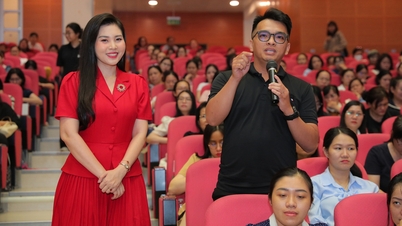

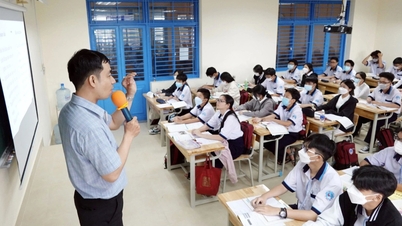
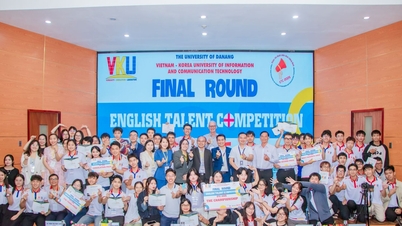




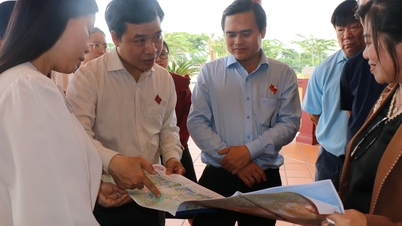








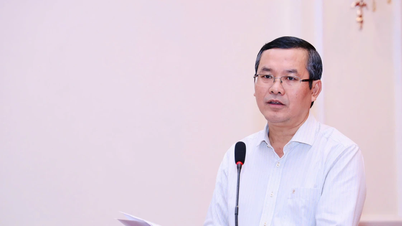






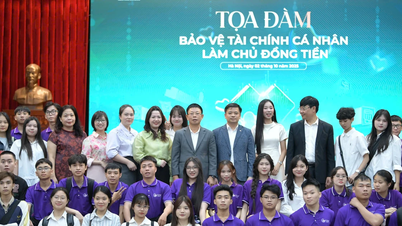




















































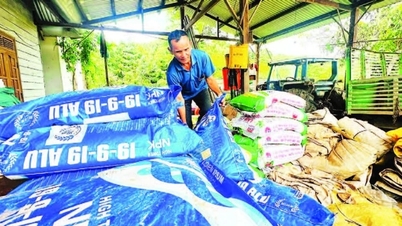















Comment (0)